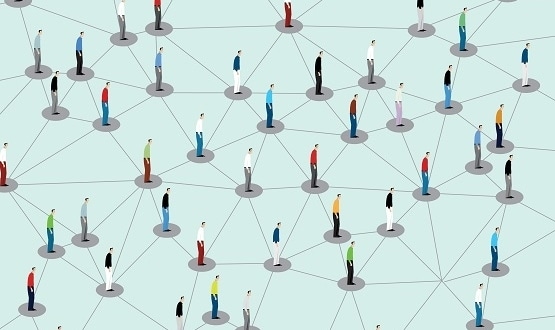Contact-tracing was one of the buzzwords of 2020 and Mark Tluszcz, co-founder and CEO at Mangrove Capital Partners, explores why automation could be the key to its success.
While there were multiple warnings from the World Health Organisation as well as flashing red lights from Wuhan, politicians in the West may be forgiven for not seeing the pandemic coming. It has after all been a crisis like no other in living memory and it would have been very difficult for any of us to imagine how quickly, and indeed dramatically, our way of life would change.
It has, however, been much harder to forgive the lack of ambition shown by Western governments since the pandemic began – particularly when the strategies of other countries have been so incredibly successful.
Taiwan, located off the coast of mainland China, was expected to be hard hit by the coronavirus. But thanks to its rapid response and use of Big Data, it has seen just a few hundred infections.
After an outbreak on the cruise ship Princess Diamond, the Taiwanese authorities used the mobile signals of passengers to track their movements throughout Taiwan. Everyone who had possibly been in contact with one of the passengers was placed in a 14-day quarantine. The path of transmission was broken and the virus was eradicated.
Use of smartphones
Taiwan has also used smartphone signals and cell tower data to place a ‘digital fence’ around those in quarantine, including those entering the country from abroad. If those in quarantine leave their zone then they, along with their local health officer, are alerted by the telecom provider with the risk of hefty fines being imposed.
Importantly, Taiwan’s strategy for containing the virus has been developed in a way that protects the privacy of its citizens. It doesn’t know the exact location of those in quarantine but it does know which district they’re in. And all the data is processed within the data centres of the telecoms companies with no access to third parties.
Concerns surrounding data privacy
Meanwhile in Europe, a lack of technology expertise, misunderstandings around data privacy and a deficiency of will have severely limited the scope of track and trace solutions. Rather than leveraging advances in technology, we’ve been largely reliant on old fashioned contact tracing.
In the UK, a BBC investigation found that just half of close contacts given to England’s NHS Test and Trace were being reached in some areas – with the system performing worst in the areas where it was needed the most. The centralised nature of the contact tracing system and, particularly in areas with more diverse populations, language barriers have been blamed for its poor performance.
The same centralised approach to testing compounded the problem. With six large mega-labs – known as Lighthouse labs – processing the bulk of the tests across the UK, swabs often travel long distances. Speed of course is critical; a study published by The Lancet Microbe found that COVID-19 is most contagious in the first 5 days after symptom onset.
Then there was the NHS Covid-19 contact-tracing app. The privacy-first app notifies users if they have come into close contact with those known to be infected with coronavirus or if they have been to coronavirus hotspots.
However it does not provide any data to the Government on the spread of the virus or potential hotspots. It is also entirely reliant on people to self-report symptoms and self-quarantine.
There is a vast treasure trove of data out there which could be used to trace virus expansion and take precise remedial action. Indeed Taiwan has shown that big data can perform contact tracing far quicker and much more effectively than traditional means. And many of us would be happy to share mobile data – according to research carried out by YouGov on our behalf, 52% of UK adults would be willing to share their mobile data if it helped to stop the spread of coronavirus, rising to 61% of those aged 55 or over.
Where there’s a will, there’s a way
Data privacy concerns are warranted but where there is a will, there is a way. Experts believe GDPR rules on data privacy are flexible enough to accommodate emergency measures provided adequate safeguards are put in place, such as those in Taiwan. Even if the data was completely anonymised it could still provide valuable insights and radically improve decision-making.
By deploying big data, governments could have eliminated emerging outbreaks with the precision of a surgeon’s knife and prevented further lockdowns. While it is too late now to eliminate the virus, we must ensure we are better placed to respond in the future. We have the technologies and expertise at our disposal. All we are lacking is the will needed among governments to navigate the challenges and put the required systems in place.

